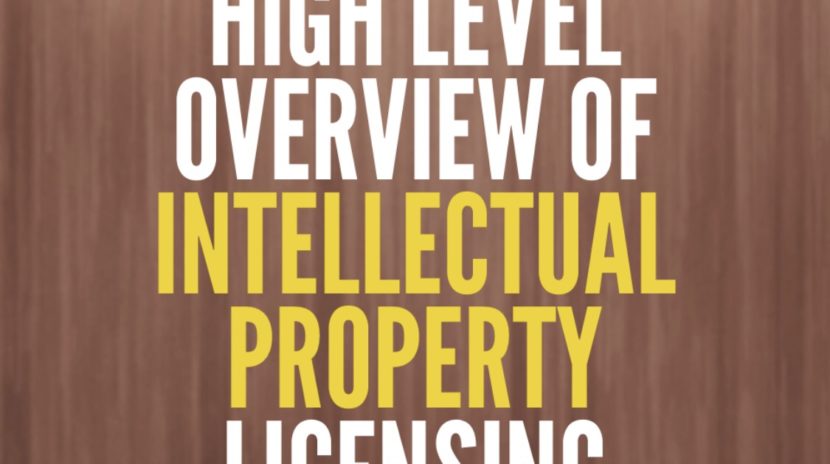The Intellectual Property (IP) of your business can come in many forms: copyrights, trademarks, patents, or trade secrets. For more specifics, check out our article about intellectual property for startups.
Licensing your intellectual property involves giving another party permission to use your IP for specific business purposes, usually in exchange for a monetary amount.
Many companies do this because it provides a great revenue stream. For example, Marvel licenses out the copyrights and trademarks to their superheroes for clothing and toys, and NBA teams license out their trademarks and copyrights to Nike and Adidas to make jerseys, clothing, and more. Patent owners license out their patents to companies to build things like toasters, brooms, computers, etc. From a tech standpoint, software companies can license out their code to white-label their products to their customers.
Licensing your IP does have some nuances, though. This post will give you a high level overview about intellectual property licensing.
Make Sure You Own the Intellectual Property You Want to License
First and foremost, you should make sure you own the intellectual property you want to license.
If it’s a logo, slogan, or name (generally a trademark) – the best way to do this is by doing research on existing marks to make sure there is nothing identical out there, and registering your trademark with the United States Patent and Trademark Office (USPTO).
If your IP is a photo, video, content, or music (generally a copyright) – make sure it’s not already copyrighted by someone else. If it’s something patentable, like code or a formula, do your research and make sure it doesn’t already exist out there.
Have a Licensing Agreement in Place
The general rule of thumb when allowing someone else to use something that’s yours – get it in writing.
Make sure you have a licensing agreement in place. For different types of intellectual property, there are specific agreements.
For example, Trademarks should have a Trademark Licensing Agreement, Copyrights should have a Copyright Licensing Agreement, Patents should have a Patent Licensing Agreement, and Technology/Trade Secrets should have a Technology Licensing Agreement.
What’s in a Licensing Agreement
While these different agreements have different names based on what it is you are assigning, the content of the agreements should all include (but are not limited to):
- Who are the parties involved – licensor (you) and licensee (who is getting a license),
- What specifically are you licensing,
- What are you getting in return for offering the license (consideration)
- Is the license exclusive, or are you allowing others to license your product,
- Who owns any improvements made to the thing you are licensing
- How long are you licensing it for,
- What standards are you holding the licensee to when using the licensed material – because you don’t want your reputation ruined by sub-par product,
- Can the license be assigned to other parties by your licensee,
- Can a debtor hold a lien against the license,
- What are the limits of the license.
Be Clear and Specific
In the agreement, and in all communications with your licensor – be as clear and specific as possible about what exactly you are licensing, and make sure they understand that the license is not an assignment. Meaning, you are not selling them the full rights to the IP – rather, you’re just giving them permission to use the IP for a limited time under limited circumstances.
Let us Help.
This is a high level overview of licensing your intellectual property, and is by no means comprehensive of everything to consider when licensing – but it’s a place to start.
Kader Law can help you understand what you need to do, and guide you through IP licensing through our Outside General Counsel offering. Contact us today if you’d like to learn more.
This post is not legal advice, and does not establish any attorney client privilege between Law Office of K.S. Kader, PLLC and you, the reader.
